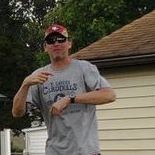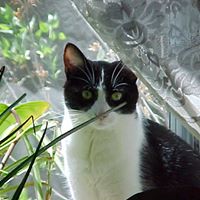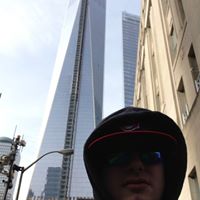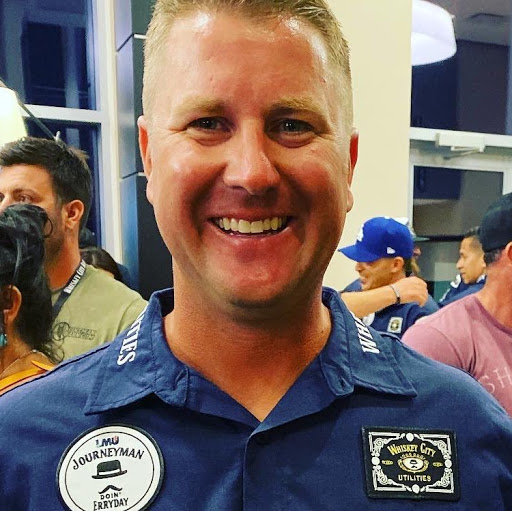Paul G Koehler
age ~78
from Omaha, NE
Paul Koehler Phones & Addresses
- 2514 S 127Th Cir, Omaha, NE 68144 • (402)3304977
- Kansas City, MO
- Lees Summit, MO
- Richville, MN
- New Brighton, MN
- 4503 NW 50Th St, Kansas City, MO 64151
Work
-
Position:Production Occupations
Education
-
Degree:High school graduate or higher
Specialities
Property Management
Lawyers & Attorneys

Paul Koehler - Lawyer
view sourceSpecialties:
Appellate Practice
Criminal Law
Felonies
Criminal Law
Felonies
ISLN:
913298167
Admitted:
1990
University:
Washington & Lee University, B.A., 1980
Law School:
St. Mary's University of San Antonio, J.D., 1987
License Records
Paul F Koehler
License #:
975340 - Expired
Category:
Swimming Pool Operator
Issued Date:
May 21, 2003
Effective Date:
Jul 30, 2007
Expiration Date:
Jun 15, 2007
Type:
Swimming Pool Operator
Paul S Koehler
License #:
FMC01570 - Expired
Category:
Food Safety
Issued Date:
Nov 28, 1994
Expiration Date:
Jan 31, 1997
Type:
Certified Food Safety Mgr
Paul Starr Koehler
License #:
FMC08543 - Expired
Category:
Food Safety
Issued Date:
Nov 17, 2000
Expiration Date:
Nov 17, 2003
Type:
Certified Food Safety Mgr
Name / Title
Company / Classification
Phones & Addresses
Owner
Omega Station
Web Design
Web Design
501 1139 Barclay St, Vancouver, BC V6E 1G8
(604)7906176
(604)7906176
Owner
Omega Station
Web Design
Web Design
(604)7906176
Us Patents
-
Electrical Cable Apparatus
view source -
US Patent:20030106704, Jun 12, 2003
-
Filed:Dec 6, 2001
-
Appl. No.:10/008438
-
Inventors:James Isley - Omaha NE, US
Paul Koehler - Omaha NE, US
Daniel Parke - Omaha NE, US
David Wiebelhaus - Omaha NE, US
Stephen Zerbs - Gretna NE, US -
International Classification:H01B011/02
-
US Classification:174/11300R
-
Abstract:An electrical cable has twenty or more twisted pairs of conductors therein formed into units of three twisted pairs and four twisted pairs, with a centrally located additional four pair unit. Dielectric film or tape partially surrounds either the three pair units or the four pair units or both to maintain separation of each unit from adjacent units. The conductors of the pairs in each unit have different twist lengths relative to the other conductors in the unit, and the units have different lay lengths, depending on the number of pairs in each unit.
-
Methods Of And Apparatus For Detecting, Measuring, And Classifying Insulation Defects
view source -
US Patent:44464223, May 1, 1984
-
Filed:Nov 24, 1981
-
Appl. No.:6/324367
-
Inventors:Paul G. Koehler - Omaha NE
Thomas P. Leahy - Omaha NE
Thomas P. Lichliter - Omaha NE -
Assignee:AT&T Technologies, Inc. - New York NY
-
International Classification:G01R 3112
G01R 3108 -
US Classification:324 54
-
Abstract:During the manufacture and/or packaging of insulated conductors, insulation defects are detected, measured, and classified by the methods and apparatus of this invention. As a twisted pair of insulated conductors (21-21), for example, is advanced along a manufacturing line (25), the insulation covers (23-23) are engaged by a probe (32) which is connected to a source of electrical power and to an electrical circuit (30). The circuit is adapted to process signals received from the probe and to make comparisons with stored signals to indicate the occurrence of pinholes, faults or bare wire in the insulation covers. In order to be accurate in its comparison and classification, the circuit includes provisions for correcting for current flow between the probe and the metallic conductors prior to and subsequent to the pair being moved through the probe and for the thickness of the probe. Depending upon the nature of the defect and its frequency of occurrence, the circuit may be caused to discontinue further operation of the line.
-
Coaxial Cable Having Effective Insulated Conductor Rotation
view source -
US Patent:62883283, Sep 11, 2001
-
Filed:Mar 19, 1999
-
Appl. No.:9/272514
-
Inventors:Douglas R. Brake - Ralston NE
Philip Nelson Gardner - Suwanee GA
Trent M. Hayes - Suwanee GA
Paul G. Koehler - Omaha NE
Dean J. Schwery - Omaha NE
Stephen Taylor Zerbs - Gretna NE -
Assignee:Avaya Technology Corp. - Basking Ridge NJ
-
International Classification:H01B 1100
-
US Classification:174 28
-
Abstract:A coaxial cable [10, 50] includes an inner conductor [11] that is separated from an outer conductor [13] by a layer of insulating material [12]. The outer conductor includes a thin sheet of metallic foil that envelops the insulating material and has a seam [14] that extends in the longitudinal direction of the cable. In a first embodiment, the insulated conductor is axially rotated (twisted) with respect to its own longitudinal axis. In a second embodiment, the outer conductor is wrapped around the layer of insulating material. In both embodiments, there is relative rotation between the insulated conductor and the outer conductor. This practice is referred to as relative insulated conductor rotation, and it significantly improves the structural return loss characteristics of a coaxial cable when the outer conductor includes an asymmetry, such as a seam, that extends in the longitudinal direction of the cable. A braided-wire shield [15] is positioned between the outer conductor and a plastic jacket [16], which provides environmental protection for the cable.
Medicine Doctors

Paul B Koehler
view sourceSpecialties:
Pediatrics
Allergy & Immunology
Allergy & Immunology
Allergy & Immunology
Allergy & Immunology
Education:
Yale University (1948)
Resumes

President At Koehler Landscape Construction Services, Inc.
view sourcePosition:
President at Koehler Landscape Construction Services, Inc.
Location:
Amherst, New Hampshire
Industry:
Retail
Work:
Koehler Landscape Construction Services, Inc.
President
Koehler Landscape Construction Services, Inc 2009 - 2012
president
President
Koehler Landscape Construction Services, Inc 2009 - 2012
president
Education:
Humphrey's County Vocational
Waverly Central High
Waverly Central High

Clinical Data Analyst At Blue Cross Blue Shield Of Minnesota
view sourcePosition:
Clinical Data Analyst at Blue Cross Blue Shield of Minnesota
Location:
United States
Industry:
Insurance
Work:
Blue Cross Blue Shield of Minnesota
Clinical Data Analyst
Clinical Data Analyst

Paul Koehler
view sourceLocation:
United States

Sales Manager At Jci Industries
view sourcePosition:
Sales Manager at JCI Industries
Location:
Kansas City, Missouri Area
Industry:
Civil Engineering
Work:
JCI Industries since 2012
Sales Manager
JCI 1998 - 2013
Sales Engineer
Sales Manager
JCI 1998 - 2013
Sales Engineer
Plaxo

Paul Koehler
view sourceCharlotte, NCRegional Marketing Director at PLANCO/The Hartford

Paul Koehler
view sourceMonsanto

paul koehler
view sourcecontroller at Belcher Roofing Corp
Classmates

Paul Koehler
view sourceSchools:
West De Pere High School De Pere WI 1989-1993

Paul Koehler
view sourceSchools:
Immanuel Evangelical Lutheran School Waupaca WI 1991-2000
Community:
John Funai, Tim Burandt, Colleen Goetler

Paul Koehler
view sourceSchools:
Waverly High School Waverly TN 1983-1987
Community:
Harvel Walker, Susie Crockett

Paul Koehler
view sourceSchools:
Dixon Elementary School Brookfield WI 1989-1992, University Lake School Hartland WI 1992-1995

Paul Koehler,jr.
view sourceSchools:
Blair Academy Blairstown NJ 1965-1969
Community:
Peter Barrett, Lisa Scheller, Patience Chalmers

Paul Koehler
view sourceSchools:
St. Jerome School (South Princeton Avenue) Chicago IL 1961-1970
Community:
Len Hoisman, Bill Schey, Roberta Berkson, Joel Gimpel

Paul Koehler
view sourceSchools:
St. Jerome School (West Lunt Avenue) Chicago IL 1961-1970
Community:
Len Hoisman, Bill Schey, Roberta Berkson, Joel Gimpel

Paul Koehler
view sourceSchools:
Cheltenham High School Cheltenham PA 1966-1970
Community:
Ilene Geiger, Carl Polichetti

Paul Koehler
view source
Chef J. Paul Koehler
view source
Paul Koehler
view source
Paul Koehler
view source
Paul Koehler
view source
Paul H Koehler
view source
Paul Koehler
view source
Paul Koehler
view sourceYoutube
Myspace
Flickr
Googleplus

Paul Koehler

Paul Koehler

Paul Koehler

Paul Koehler

Paul Koehler

Paul Koehler

Paul Koehler

Paul Koehler
Get Report for Paul G Koehler from Omaha, NE, age ~78

















